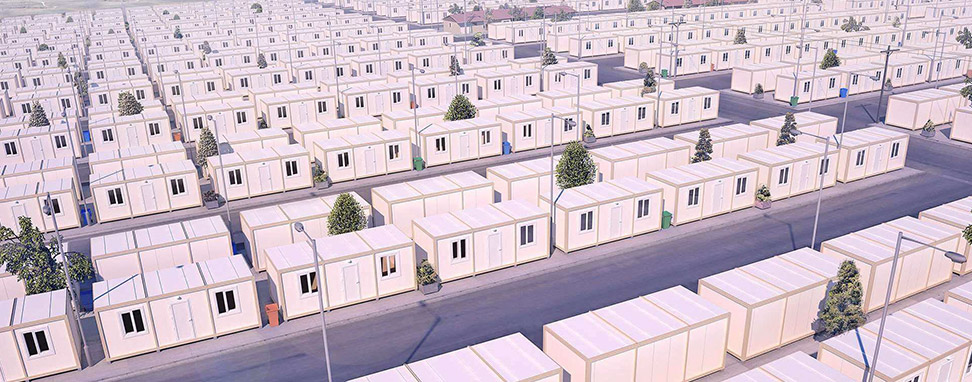In recent years, the concept of detachable container houses has gained significant attention as a sustainable, cost-effective, and versatile solution for housing needs. These structures, built using repurposed shipping containers, offer an innovative approach to construction that combines functionality, eco-friendliness, and adaptability.
The key feature of detachable container houses is their ability to be transported intact and reinstalled at different locations without compromising structural integrity. This modularity allows users to customize layouts based on specific requirements while minimizing waste during construction.
Sustainability : By repurposing old shipping containers, detachable container houses reduce landfill waste and promote recycling. Additionally, many designs incorporate energy-efficient materials and renewable energy systems like solar panels, further enhancing their environmental credentials.
Cost-Effectiveness : Compared to conventional construction methods, building with shipping containers is significantly cheaper due to lower material costs and faster assembly times. The durability of steel ensures longevity, reducing long-term maintenance expenses.
Speed of Construction : Since the containers are pre-fabricated, construction time is drastically reduced. On-site assembly typically involves connecting modules, installing utilities, and finishing interiors—a process that can take weeks rather than months.
Durability and Strength : Steel containers are inherently robust, offering excellent resistance to natural disasters such as earthquakes, hurricanes, and floods. Their sturdy frames make them suitable for harsh environments.
Customization and Flexibility : Detachable container houses can be tailored to meet individual preferences through creative design choices, including window placements, color schemes, and interior finishes. Moreover, their modular nature allows for easy expansion or relocation if needed.
Detachable container houses find applications in numerous sectors:
Residential Housing : Affordable housing solutions for urban areas, disaster relief camps, or remote communities benefit greatly from the flexibility and affordability of container homes.
Commercial Spaces : Startups and small businesses use container houses as pop-up shops, office spaces, or temporary event venues, leveraging their mobility and unique aesthetic appeal.
Tourism and Hospitality : Eco-friendly resorts and glamping sites employ detachable container houses to provide modern accommodations in scenic locations while minimizing environmental impact.
Education and Healthcare : Mobile classrooms, clinics, and laboratories constructed from containers serve underserved regions by delivering essential services where infrastructure is lacking.
Challenges and Future Prospects

Despite their advantages, detachable container houses face certain challenges. For instance, insulating steel containers against extreme temperatures requires additional layers of material, increasing costs. Furthermore, transporting oversized containers may pose logistical difficulties depending on location and road conditions.
Looking ahead, advancements in technology and engineering will likely address these issues. Innovations such as improved insulation techniques, smart home integration, and advanced coatings for corrosion resistance promise to enhance the performance and appeal of detachable container houses. As awareness grows about sustainability and resource efficiency, demand for these innovative structures is expected to rise.
Detachable container houses exemplify how creativity and ingenuity can transform industrial waste into functional, stylish, and environmentally friendly living spaces. Their versatility, affordability, and adaptability make them ideal for addressing diverse housing needs across industries. While challenges remain, ongoing developments suggest a bright future for this revolutionary form of modular architecture. Whether used as permanent residences, commercial establishments, or emergency shelters, detachable container houses continue to redefine the boundaries of modern construction.








